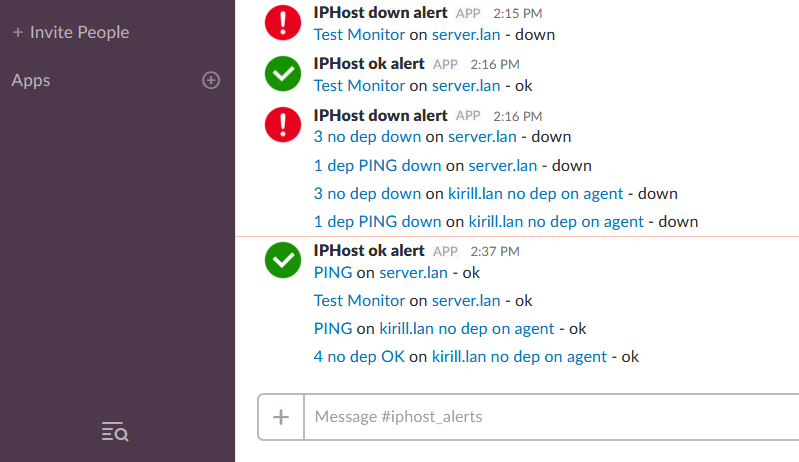This is a major release, with new features introduced, and bugs fixed.
Integration with templates community site
Now you can work with application templates published on IPHost Application Templates Community forum directly from IPHost Monitor Client. The following is now available:
- publish one’s own templates
- download templates published by other users
- provide feedback to template authors
- schedule automatic template download by Monitoring service
- configure reception of periodic digest e-mail
All the above can be done without leaving the IPHost Client (proceed to “Settings > Community” section). You need forum account in order to publish templates and provide feedback; to get one, you can sign up from IPHost Client as well and become a community member.
To ensure consistent quality, community templates are moderated. Other users will only get the
template(s) approved by forum moderator (an approval comment will appear on the template page).
Our support engineers also publish useful templates from time to time; a few of them are there
already.
We encourage existing users to share their application templates and help us build an ecosystem
where all of you will benefit from everyone else’ efforts.
Installation
- IPHost Network Monitor can now be installed in unattended (batch) mode; that can be useful when automating deployment of systems running IPHost (main program and/or agent)
- curl utility is now bundled with IPHost (to provide simple programmable interface to a variety of protocols); that allows sending complex HTTP(S) requests (both for monitoring and running alert actions)
- When IPHost is updated to new versions, database upgrade progress bar is displayed.
Client Application
- Debug logging can be enabled in “Settings > Monitoring” section, to provide our Technical Support with additional information in case something went wrong in the monitoring system.
- You can now set a separate “Reply To” Email address for alerts and reports in the “Settings > Email Settings”
- You can now add custom HTTP headers to your HTTP(S) and Web Transaction Monitor (WTM) requests
Monitoring Service
- “Script over SSH” action functionality has been restored. Previously this action established SSH connection but did not run the script. Subsequent invocation of the same action could produce an “unknown exception” message to the log panel.
- Fixed: “Execute program” action works correctly when empty credentials are indicated. Previously it might fail with “parameter is incorrect” message in a log panel.
- Fixed: when Network Discovery is run, new hosts are added to specified host group
Reports
- 1024 (formerly 128) first bytes of «Notes (in reports)» field are now displayed as «Report notes» when viewing reports via «Reports» tab or Web interface.
Alerting
- Now you can indicate that monitors or remote agents depend on agent connection. When connection to
this agent is lost, you will receive a single overall email message with information about all
affected monitors. Monitors will enter “Stopped by dependency” state until connection to the agent
is restored. - Sound alerts no longer interrupt one another. Multiple sound alerts triggered
at the same time are queued, and played one by one if they use different sound
files. If they use the same sound file, it is only played once. -
Now you can configure special recovery action for an escalated problem state (in other words, for
recovery from a long-lasting problem). For example, an e-mail to system administrator can be
sent on recovery from a short-time problem, but an e-mail to CIO can be sent when the same monitor
recovers from problem state that lasted for a long time and the escalation alerts were already
performed.Previously different recovery alerts for normal and escalated problem states were only configurable
as repetitions of the same actions that were executed when problem / escalation state was
reported. Thus different e-mail templates for long-term problem and recovery could not be used.
Now you can configure four different actions for all four different state transitions:- problem occurs
- recovery from problem state
- monitor remains in the problem state for a long time (escalation)
- recovery from escalated problem state
Additionally, recovery actions are not performed now if problem state ends before problem actions
are executed because a few seconds delay is set for performing them and recovery occurs
before this delay is over. -
This release was tested and confirmed to support alerting via popular groupware and messaging platforms: Slack, HipChat, Microsoft Teams, and Telegram. Follow instructions in corresponding KB articles to configure alerts for these platforms.
An example screenshot for Slack:


